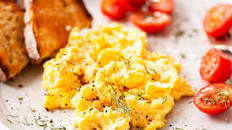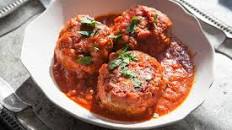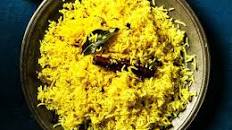Elevate Your Grilling Game with the Perfect Steak Marinade
The Art of Steak Marinade: Elevate Your Grilling Game
Steak lovers know that a great marinade can take a good cut of meat to the next level. Whether you prefer your steak rare, medium, or well-done, the right marinade can enhance its flavour and tenderness, making each bite a culinary delight.
Key Ingredients for a Perfect Steak Marinade
Creating a delicious steak marinade is all about balance. Here are some key ingredients to consider:
- Acid: Ingredients like vinegar, citrus juices, or wine help tenderize the meat and add depth of flavour.
- Oil: Olive oil or vegetable oil can help seal in moisture and prevent the steak from sticking to the grill.
- Herbs and Spices: Fresh herbs like rosemary, thyme, or spices like garlic, paprika, and black pepper can infuse the steak with aromatic goodness.
- Sweetness: A touch of sweetness from honey, brown sugar, or maple syrup can balance out the savoury elements in the marinade.
- Salt: Don’t forget to season your marinade with salt to enhance the overall taste of the steak.
Tips for Marinating Steak
To get the best results from your steak marinade, follow these tips:
- Marinate your steak in a resealable plastic bag or a shallow dish to ensure even coating.
- Avoid marinating for too long – 30 minutes to 24 hours is usually sufficient depending on the thickness of the steak.
- Pat dry your steak before grilling to promote better searing and caramelization.
- Let your steak rest after grilling to allow the juices to redistribute for maximum tenderness.
Amp Up Your Grilling Game
Whether you’re hosting a barbecue or simply craving a delicious steak dinner at home, experimenting with different marinades can add excitement to your culinary adventures. From classic herb-infused blends to bold and spicy concoctions, there’s no limit to what you can create. So fire up that grill and get ready to impress your taste buds!
8 Essential Tips for Perfect Steak Marinade: Enhance Flavour and Tenderness
- Marinate the steak for at least 30 minutes to allow the flavours to penetrate.
- Use a mixture of acidic ingredients like vinegar or citrus juice to help tenderize the meat.
- Add herbs and spices such as garlic, thyme, and rosemary for extra flavour.
- Include some oil in the marinade to help keep the steak moist during cooking.
- Avoid using too much salt in the marinade as it can draw out moisture from the meat.
- Consider adding a touch of sweetness with ingredients like honey or brown sugar for caramelization.
- Experiment with different marinade recipes to find your favourite combination of flavours.
- Don’t forget to pat the steak dry before cooking to ensure a good sear.
Marinate the steak for at least 30 minutes to allow the flavours to penetrate.
For a flavourful and tender steak, it is essential to marinate the meat for a minimum of 30 minutes. This allows the marinade’s rich blend of ingredients, such as herbs, spices, and acids, to penetrate the steak, infusing it with depth and complexity. The marinating process not only enhances the taste but also helps tenderize the meat, ensuring a succulent and delicious dining experience. So, be patient and give your steak ample time to soak up all those wonderful flavours before grilling to perfection.
Use a mixture of acidic ingredients like vinegar or citrus juice to help tenderize the meat.
To enhance the tenderness of your steak, consider incorporating a blend of acidic components such as vinegar or citrus juice into your marinade. These ingredients not only infuse the meat with a tangy zest but also work to break down its fibres, resulting in a more succulent and flavourful dining experience. By allowing the acidic elements to work their magic, you can elevate the texture and taste of your steak to new heights, ensuring each bite is a delectable sensation for your palate.
Add herbs and spices such as garlic, thyme, and rosemary for extra flavour.
Enhance the flavour profile of your steak marinade by incorporating a medley of herbs and spices like garlic, thyme, and rosemary. These aromatic additions not only infuse the meat with a tantalising depth of taste but also bring a touch of sophistication to your grilling experience. The combination of earthy thyme, robust rosemary, and pungent garlic creates a harmonious blend that elevates the overall savouriness of your steak, ensuring each bite is a culinary delight worth savouring.
Include some oil in the marinade to help keep the steak moist during cooking.
Including oil in your steak marinade is a crucial tip to ensure that your steak stays moist and juicy during the cooking process. The oil helps create a protective barrier on the surface of the meat, sealing in moisture and preventing it from drying out on the grill. Whether you opt for olive oil, vegetable oil, or another type of oil, this simple addition not only enhances the texture of the steak but also contributes to a more succulent and flavourful end result.
Avoid using too much salt in the marinade as it can draw out moisture from the meat.
When preparing a steak marinade, it is crucial to exercise caution when adding salt. Using an excessive amount of salt in the marinade can inadvertently draw out moisture from the meat, potentially resulting in a drier and less tender steak. By carefully controlling the salt content in the marinade, you can ensure that your steak retains its juiciness and succulence, enhancing the overall dining experience. Balancing flavours while being mindful of salt levels will help you achieve a perfectly marinated steak that is both flavourful and moist when cooked to perfection.
Consider adding a touch of sweetness with ingredients like honey or brown sugar for caramelization.
When preparing your steak marinade, one tip to elevate the flavour profile is to incorporate a hint of sweetness using ingredients such as honey or brown sugar. This addition not only balances out the savoury notes but also promotes caramelization when the steak hits the grill. The subtle sweetness enhances the depth of flavour, creating a delectable crust on the steak that adds a delightful contrast to each juicy bite.
Experiment with different marinade recipes to find your favourite combination of flavours.
To elevate your steak game, don’t be afraid to experiment with various marinade recipes to discover your ultimate combination of flavours. Whether you’re drawn to zesty citrus infusions, robust herb blends, or smoky spice mixes, exploring different marinades can unlock a world of culinary possibilities. By trying out diverse flavour profiles and adjusting ingredient ratios, you can tailor your marinade to suit your palate perfectly. Embrace the joy of culinary creativity and let your taste buds guide you towards finding the ideal steak marinade that will make every bite a memorable experience.
Don’t forget to pat the steak dry before cooking to ensure a good sear.
To achieve a perfect sear on your steak, it’s crucial not to overlook the step of patting the meat dry before cooking. By removing excess moisture from the surface of the steak, you create an ideal environment for caramelization and browning. This simple yet essential tip enhances the flavour and texture of your steak, resulting in a mouth-watering crust that locks in those juicy, savoury goodness with every bite.








